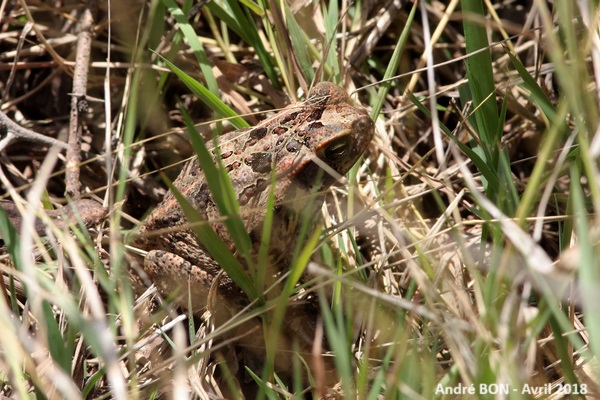
| Cane Toad (Rhinella marina (Linnaeus, 1758)) |

|
|
Scientific name: Rhinella marina (Linnaeus, 1758) Common name: Cane Toad Other names: Giant Toad. Old scientific name: Bufo marinus. French name: Crapaud bœuf, Crapaud buffle. Order: Anura Family: Bufonidae Size: 10 to 15 cm in general, some specimens can reach up to 24 cm, or even more in captivity. Females are larger than males. Habitat: Many habitats, from tropical forest to more open and drier environments, even in urban areas, with a preference for proximity to freshwater aquatic habitats. Food: Small living or dead animals, small rodents, small reptiles, small birds, amphibians and many invertebrates. Preys are captured with the rapidly extending tongue. They are completely swallowed. Reproduction: Females lay eggs in the water. The clutch is a sort of gelatinous chain which can contain between 8,000 and 25,000 black eggs. Eggs hatch into tadpoles more quickly if the temperature is high, this varies from 14 hours to one week. Geographic area: Central America and northern South America, from southern Texas to the Amazon rainforest. Introduced to several islands in the West Indies, the Philippines, Papua New Guinea, Fiji and north-eastern Australia among others. |
Cane Toads are large toads of variable colour, grey, yellowish, greenish brown or reddish brown, with very variable dark markings. There may be a thin light dorsal line between the head and tail. The head is broad and flattened with a bony ridge running from the snout to the corner of the eye and large eyes with a horizontal pupil. The legs are short. The fingers are not webbed, there is only a short and thin skin between the base of the toes. The thick skin contains cutaneous glands which secrete a venom dangerous to humans and many animals. The Cane Toad has been introduced to many countries to combat pests in agricultural production. It has often become a pest itself for many local species due to its toxicity (including the toxicity of tadpoles) and its high reproduction rate. |
| [To know more about the Cane Toad] [Top] |

|
Cane Toads were introduced to Martinique at the beginning of the 19th century to combat sugar cane pests. Here is one of the descendants of these introduced toads. |